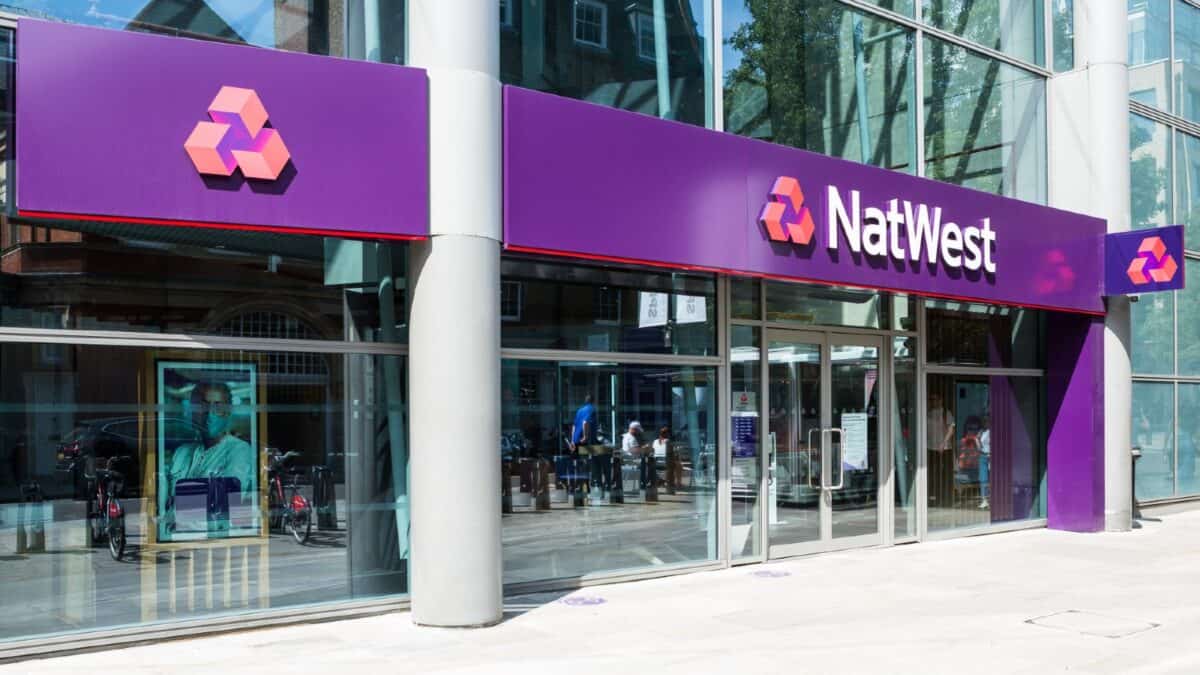
Image source: NatWest Group plc
Imagine being able to buy pound coins for just under 64p each at the start of the year – and having been paid to own them! That is just about what has happened with one FTSE 100 share. It is up 57% so far this year — and has a 5.1% annual dividend yield to boot!
Now, shares are different to coins. This particular share has soared in value this year. But that does not mean it will continue doing so. It could fall. Or it could keep on going, adding to the 73% gain shareholders have enjoyed over the past five years.
High street bank with lots to like
The company in question is familiar to most of us: NatWest (LSE: NWG).
NatWest owns the eponymous bank and also operates under other brands, such as the Royal Bank of Scotland and Ulster Bank.
I think there is a lot to like. It has strong brand recognition, a large customer base, strong profits and should benefit from resilient long-term demand for financial services.
Why are the shares valued like this?
Given those strengths (which to my mind were as obvious in January as they are now), why has the share soared and why does it still trade on a low-seeming valuation of 7.3 times earnings?
NatWest is not the only bank on a fairly low looking P/E ratio right now. Lloyds sells for eight times earnings and Barclays for 9.
I think these valuations reflect the perceived risks of an uncertain economy. If that leads to a softer housing market and higher loan defaults, bank profits could fall. NatWest’s first-half profit from continuing operations was 12% lower than in the same period last year.
But here is the less obvious point. If P/E ratios are still fairly low because banks continue to be seen as risky, why has NatWest increased in value by more than half so far this year? Are investors ignoring the risks?
One explanation is that as the government has continued to sell down its stake (a remnant of the bailout during the financial crisis), the City has paid more attention to the fundamentals of the business and valuation. It seemed cheap before and has been pouring off large amounts of cash
Even after the share price rise this year — bigger than the 22% and 47% seen at Lloyds and Barclays, respectively – its P/E ratio remains lower than them both.
Could things keep moving up?
Still, as those other bank price rises suggest, investors have warmed to the sector this year.
Fear of a a sharp economic downturn have not yet come to fruition, so the risk discount on the shares has got smaller and their prices have moved up. They could go higher from here.
Still, I remain nervous about the health of the global economy. US economic indicators suggest the world’s biggest economy may be struggling. I fear what that might ultimately mean for bank shares on both sides of the pond.
For now, I have no plans to buy NatWest – or any of its FTSE 100 banking peers.













